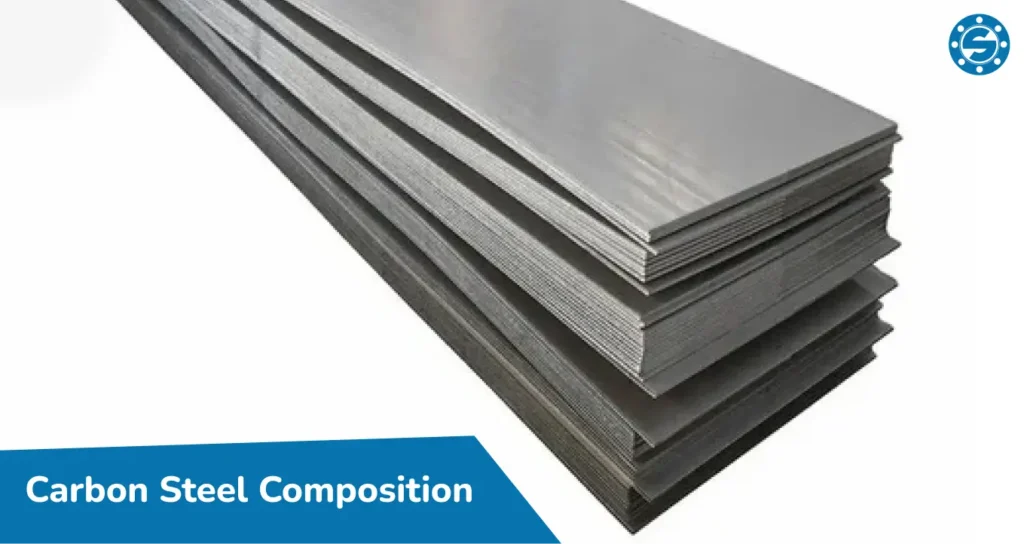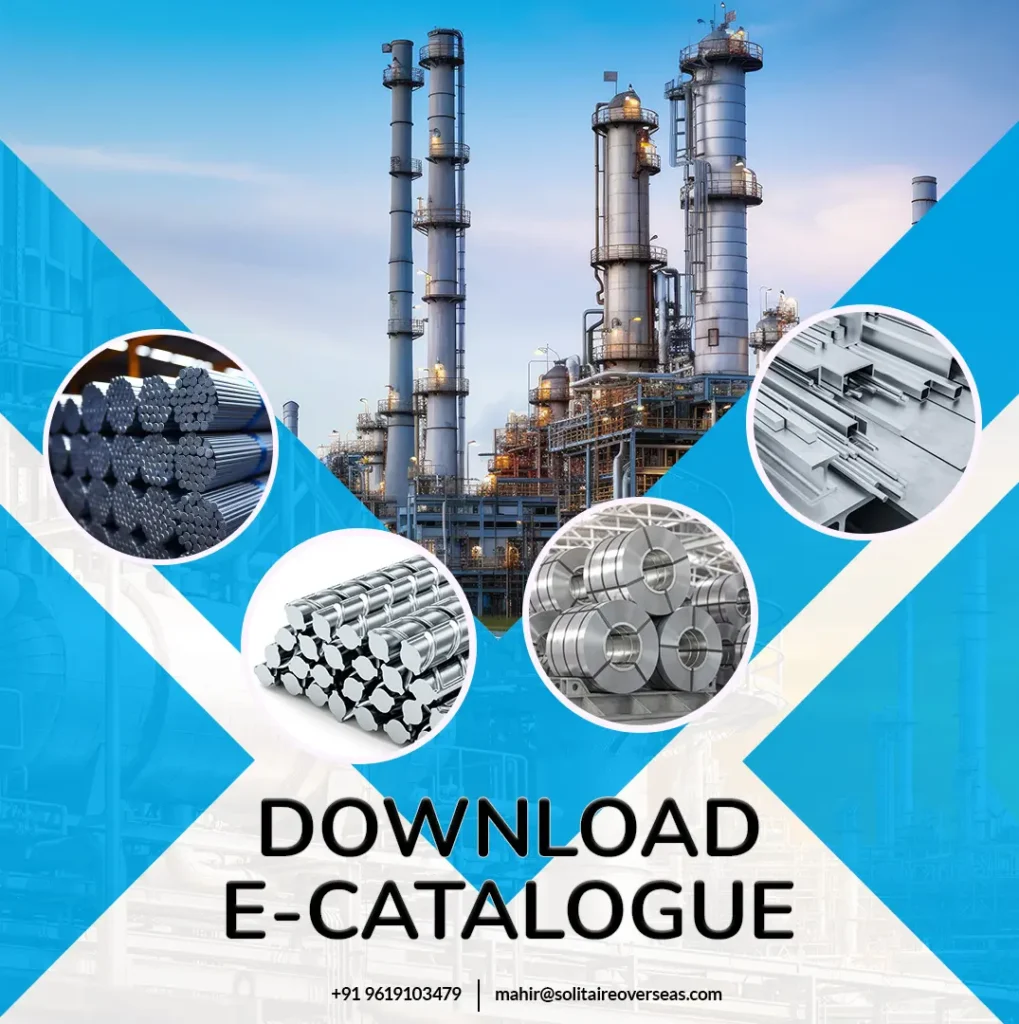Carbon Steel Composition

Material Composition of Carbon Steel
Though carbon is the key element in carbon steel, other elements contribute to its properties. Here’s a breakdown of the main components of Carbon Steel:
Carbon: The primary element that increases in quantity across low, medium, and high carbon steels, affecting hardness and strength.
Manganese: Enhances hardness and strength, making the steel more durable.
Silicon: Aids in de-oxidizing the steel during production, ensuring a cleaner finish.
Copper: Adds to the steel’s corrosion resistance, helping to protect against rust and environmental damage.
These elements work together to give carbon steel its diverse range of properties, making it suitable for various applications.
Chemical composition of Carbon Steel
|
Material |
Percentage |
|
Carbon |
0.6-1.5 |
|
Silicon |
0.15-0.3 |
|
Manganese |
0.15-0.35 |
|
Chromium |
0.2 |
What is high-carbon steel?
High-carbon steel is a type of steel with a higher carbon content, generally ranging between 0.60% and 1.00%, and manganese levels between 0.30% and 0.90%. This higher carbon content gives the steel extra strength and toughness, but it also makes it more brittle and less flexible than lower-carbon steels like mild steel.
The structure of high-carbon steel, particularly its pearlite formation, makes it strong and resistant to deformation, which is why it’s often used for spring materials and high-strength wires. One of its unique properties is that it has “memory”—meaning it can return to its original shape after being stretched.
In construction and other applications where strength and hardness are key, the carbon level is often pushed to the maximum to enhance performance. However, certain limitations, like reduced toughness or weldability, can influence how much carbon is added, especially for products like forged steels or high-strength wires.
Composition of High-Carbon Steel
High-carbon steel is commonly used in engineering for its high tensile strength and durability. It typically contains between 0.5% to 1.0% carbon and around 0.4% manganese, with the remainder being mostly iron. This higher carbon content makes it stronger and more impact-resistant than low-carbon steel. Special forging techniques can further enhance its strength by adding layers of carbide or other elements. This makes high-carbon steel perfect for products that need to withstand heavy use, such as tools, construction components, and machinery parts.
Uses of High-Carbon Steel
High-carbon steel is ideal for applications where strength, hardness, and wear resistance are crucial. It’s commonly used in the production of knives, saw blades, springs, gears, chains, and brackets. It’s also used in tools like cold chisels, wrenches, drill bits, and hacksaws, as well as structural wire and shear blades. These items are made to endure tough conditions and frequent use.
Household Toys and Appliances
High-carbon steel is now used in many household items for better strength and durability. For example, the back of your refrigerator door is secured with steel fasteners instead of screws on the front, giving it a cleaner look. You can also find these steel fasteners in appliances like televisions, refrigerators, and dishwashers, where steel bolts hold parts in place without visible screws or trim clips.
In home improvement stores, high-carbon steel washers and pipe hangers are readily available for everyday use. Items such as toy wagons, lawn and garden tools, cars, and golf carts often have valve covers, gaskets, and fasteners made from high-carbon steel to ensure they last longer and perform better.
Automotive
High-carbon steel is widely used in the automotive industry for its strength and reliability. Clamps made from high-carbon steel are commonly used to secure the fuel rail to the engine block and manage body fluid transfers.
This steel, combined with copper, is also used in the terminals for electrical connections, such as in backup sensors. Additionally, small high-carbon steel clips are found in side bumpers, helping with park assist functions and keeping the bumper securely in place.
Manufacturing and Construction
In the manufacturing sector, high-carbon steel is essential for making various tools and components. It’s commonly used to produce cutting tools, springs, and coils due to its strength and durability. Additionally, high-carbon steel is used for washers and fasteners, which are crucial for assembling and securing parts in construction and industrial applications.
Conclusion
Carbon steel’s composition plays a crucial role in defining its properties and applications. With carbon levels ranging from 0.5% to 1.0%, and manganese around 0.4%, this steel type offers increased strength and durability compared to lower-carbon steels. Its unique mix makes it ideal for demanding applications, from household appliances to automotive components and industrial tools. Understanding its composition helps in selecting the right type of carbon steel for specific needs, ensuring both performance and longevity.


